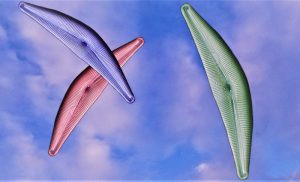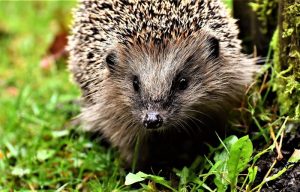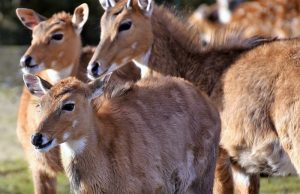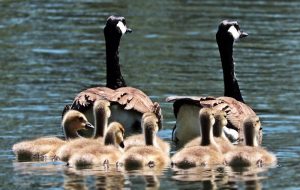Diatoms
Diatoms are a group of unicellular and silicified algae of considerable small size. From the functional point of view, they are individual cells that can appear as filaments, chains or colonies, either in the phytoplankton column or also, attached to the benthos. The siliceous cell wall that it contains keeps all the organs that the cell possesses and has a series of quite complex structures. The siliceous wall is transparent, and in this way allows light to enter, it is also perforated, which allows the adequate diffusion and excretion of the different waste materials. Diatoms are abundant in almost all habitats and divide in a vegetative way. So, we can say that diatoms are organisms that make up plankton.
What are diatoms?
Diatoms are a monophyletic group of algae composed of unicellular or colonial eukaryotes, almost all of them are autotrophs. They are a fundamental part of plankton and are unicellular, important for the life of the earth.
Characteristics of diatoms
The main characteristics of diatoms are as follows:
- They have a cell wall that surrounds the entire cell as if it were an external skeleton.
- Their cell wall is formed by silica.
- They have little or no ability to move so they are carried away by different currents and surfaces.
- They reproduce by binary division, each new cell has one leaflet, and then over time, develops the other.
- They can be divided every 18 to 36 hours, so they exist in large numbers.
- They can be used in the manufacture of glass, dynamite and raw material for water purifiers.
- They achieve the assimilation of food in some animals and also stimulates their appetite.
- They provide protection against solar radiation and function as insulators.
- They are effective against plagues and many diseases caused by fungi.
- It has great capacity to absorb moisture, so it takes advantage of water.
- They are simple organisms that have scourges.
- They can appear as unicellular beings or as a formation of clusters of cells.
- They are considered to be the most abundant eukaryotic organisms in the aquatic environment.
Types of diatoms
They can be classified according to the distribution of their pores. There are central diatoms that have a radial symmetry. When diatoms have a bilateral symmetry, then they are called pennades. There are four different types of diatoms: coscinodiscophyceae, mediophyceae, fragilariophyceae and bacillariophyceae.
Diet
Diatoms can perform the photosynthesis process in order to obtain organic carbon when they are in the presence of sunlight. Being an algae, it takes its food from the aquatic soil of the water, to which sunlight and oxygen are added, thus creating glucose and carbon dioxide. Some scientists say they also feed on bacteria.
Habitat
Diatoms are able to live in very different habitats so they can live in freshwater and seawater and can be found around the world regardless of the local climate.
Life cycle
After they have reproduced, the growth process continues until the cells reach one-third of their maximum size. Sometime later, they die and are deposited on the bottom of the sea.
Reproduction
They reproduce through asexual reproduction and cell division. This means that they reproduce by bipartition by means of leaflets that increase in size forming daughter cells. These daughters continue to grow and acquire the size of an adult cell.
Importance
They are very important because they function as photosynthetic beings that fix atmospheric carbon and at the same time produce large amounts of oxygen, which is why they are fundamental in ecosystems, since they form one of the main components of the food chain. They sustain the other levels of the food pyramid. They also help to indicate the quality of water because they detect concentration of nutrients, acidity, salinity and other reactions product of the alterations caused by the human being because they even work as insecticides since it can eliminate plagues without damaging the plants or humans. They work perfectly in ant, cockroach and lice control and can also be used as fertilizer.
Diatomaceous land
Due to the great capacity of reproduction that have the diatoms, when these die, their shells are deposited in the seabed, forming what is known as land or mud diatoms. These beds, then form a series of rocks of sedimentary origin and cover the seabed and freshwater deposits. They are considered part of the land bottoms of the continents. It is mainly used as a fertilizer and natural insecticide in gardens and fields.
Examples of diatoms
- Thalassiosiraceae
- Skeletonemataceae
- Ardissoneaceae
- Stephanosdiscaceae
- Toxariaceae
- Lauderiaceae
- Thalassionemataceae
- Chrysanthemodiscaceae
- Rhabdonemataceae
How to cite this article?
Briceño V., Gabriela. (2019). Diatoms. Recovered on 23 February, 2024, de Euston96: https://www.euston96.com/en/diatoms/










